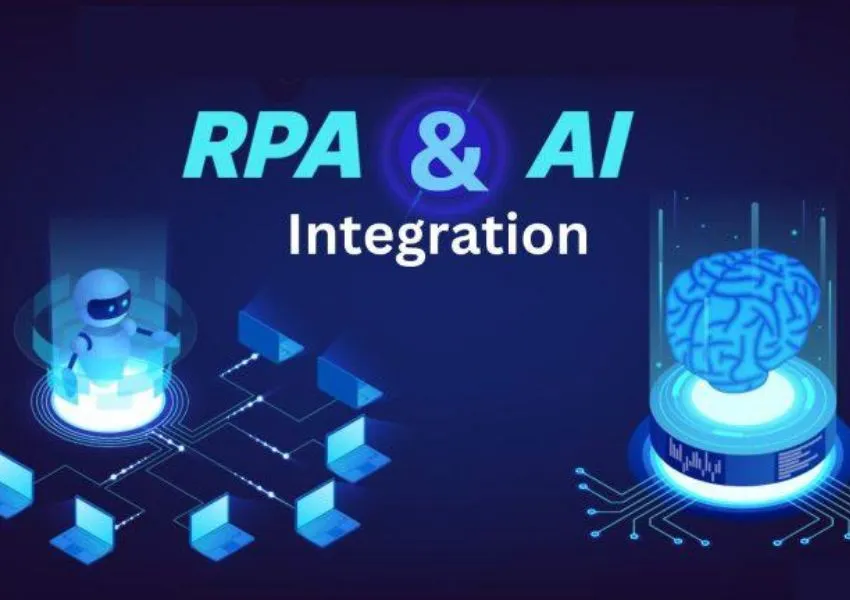As part of an intensive 3-month digital director certification program that I attended, it gave me board-level insights in the entire digital transformation that is happening at break-neck speed globally.
AI of course is a term that resonates with the entire world. Yet not many are aware that investment in Robotic Process Automation (RPA) has been on an upward trajectory since its inception. RPA and AI are two technologies that are becoming more and more indispensable assets to organisations.
This article attempts to focus on how using AI in conjunction with RPA will expand and complement their capabilities and achieve automation objectives with much greater efficiency and effectiveness.
However, in the rush for businesses to explore these new areas of innovation, it becomes important to understand what they mean so that they could be utilised more effectively.
RPA in essence is how digital workers can execute a business process at high speed and in high volumes, built on certain rule-based parameters. RPA is ideally suited for relatively simple and linear processes, which are highly repetitive. To explain further, RPA is a software technology that has the capability of simplifying business operations by automating mundane day-to-day tasks by imitating human behaviours. RPA can mimic human interactions with computer systems and execute a series of predefined tasks, saving companies both time and money. Additionally, RPA eliminates human errors and boosts employee satisfaction and engagement. It allows key employees to focus on more essential and strategic tasks.
AI on the other hand is a technology that can ‘think’ for itself and therefore, execute more complex processes autonomously. RPA can handle repetitive tasks while AI can bring in decision-making and analytical capabilities. AI focuses on creating intelligent machines that can learn and make decisions similar to humans. AI technologies include machine learning, natural language processing, and computer vision. AI operates by harnessing large datasets and advanced algorithms to recognise patterns, make predictions, and continually enhance its performance over time.
When RPA and AI are effectively combined, they can drive much superior digital transformation within any organisation.
Take retail, for example. A combination of RPA and AI is mainly targeted to enhance customer service and experiences. This includes optimising operations and improving decision-making to stay competitive in the ever-evolving market landscape.
Creating an integrated automation platform that seamlessly combines and fully utilizes RPA and AI capabilities requires careful planning and development. It is always a good idea to begin with smaller-scale prototypes to test RPA and AI integration before scaling, collaborating with automation technology vendors for further support and guidance.
Responsible AI implementation is crucial to avoid ethical, privacy, and security issues. More and more stringent laws are on their way. It always helps to mitigate risks by choosing verified AI models that have been trained appropriately. Data security prioritization is critical. Very soon, organisations and their key personnel are likely to face severe penal, criminal and/or civil charges based on the kind of negligence established. Many feel that their region would take some time to enforce compliance. However, with the world being a global village, even one transaction done in Europe or the western world, where data laws are tough, could land companies in trouble
And yet, there is no better time than now to get on board with integrated RPA and AI to maximise the value that RPA can bring to an organisation. With the global excitement around AI that is currently captivating the business world, RPA implementations may be the first step to success.
Common actions executed by RPA include data entry and extraction, email management, and report generation, to name a few. Meanwhile, AI can create predictive analysis, recommendation systems, image and speech recognition, and autonomous decision-making. These capabilities make the two technologies extremely useful in healthcare, customer service, finance, and many more.
While RPA and AI offer unique benefits, their true potential shines when combined. For example, let’s consider a simple mortgage application process at a bank.
RPA manages data entry, document verification, and other routine tasks, while AI analyses applicants’ financial histories and credit scores for lending decisions. This synergy accelerates the entire process, reduces operational costs, and enhances customer satisfaction with faster responses.
Furthermore, the insights generated by AI-powered analytics instruct RPA bots to adapt to real-time processing. This dynamic approach ensures that businesses remain agile and responsive to changing market conditions.
Despite the immense benefits of RPA and AI, there are challenges to be mindful of. Implementing these technologies requires a significant investment in terms of time, money, and human resources.
Furthermore, it is essential to strike the right balance between automation and human interaction. While RPA and AI can handle many tasks, there are situations where human intervention and judgment remain critically indispensable.
The synergy between RPA and AI is already transforming business operations across industries. Not only are these technologies great tools for efficiency, but they are also catalysts for innovation. Through the power of automation and cognitive capabilities, businesses can streamline processes, enhance decision-making, and ultimately deliver better value to customers. While challenges exist, the potential rewards make the integration of RPA and AI a compelling proposition for businesses looking to thrive in the digital age.
The over-riding principle in the digital transformation exercise is that organizations which operate with higher levels of integrity and self-disciplined compliance stand a greater chance of sustained success.
